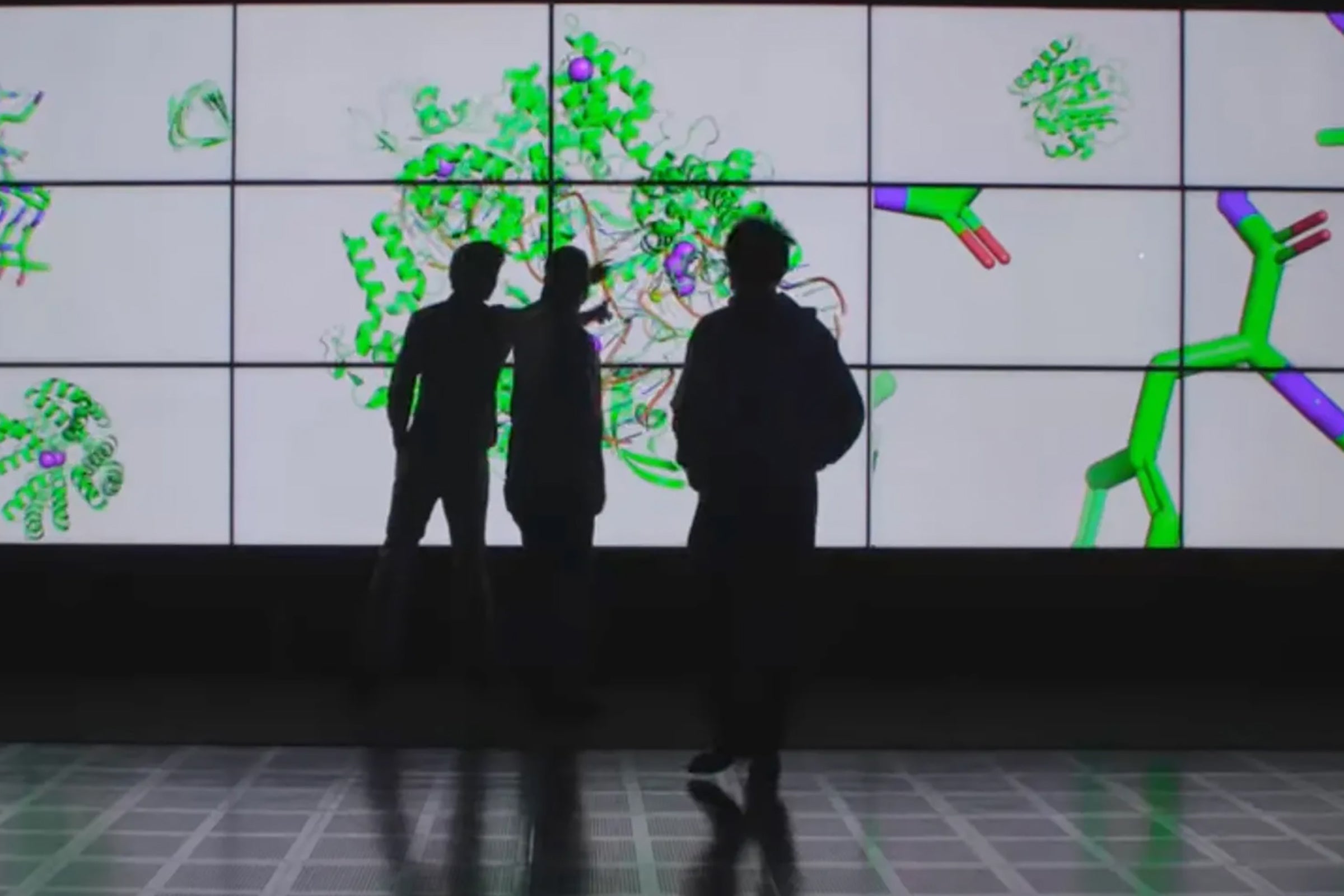Computer Scientists Find Mass Extinctions Can Accelerate Evolution
Robots evolve more quickly and efficiently after a virtual mass extinction modeled after real-life disasters such as the one that killed off the dinosaurs.

At the start of the simulation, a biped robot controlled by a computationally evolved brain stands upright on a 16 meter by 16 meter surface. The simulation proceeds until the robot falls or until 15 seconds have elapsed. Image credit: Joel Lehman.
A computer science team at The University of Texas at Austin has found that robots evolve more quickly and efficiently after a virtual mass extinction modeled after real-life disasters such as the one that killed off the dinosaurs. Beyond its implications for artificial intelligence, the research supports the idea that mass extinctions actually speed up evolution by unleashing new creativity in adaptations.
Computer scientists Risto Miikkulainen and Joel Lehman co-authored the study published today in the journal PLOS One, which describes how simulations of mass extinctions promote novel features and abilities in surviving lineages.
"Focused destruction can lead to surprising outcomes," said Miikkulainen, a professor of computer science at UT Austin. "Sometimes you have to develop something that seems objectively worse in order to develop the tools you need to get better."
In biology, mass extinctions are known for being highly destructive, erasing a lot of genetic material from the tree of life. But some evolutionary biologists hypothesize that extinction events actually accelerate evolution by promoting those lineages that are the most evolvable, meaning ones that can quickly create useful new features and abilities.
Miikkulainen and Lehman found that, at least with robots, this is the case. For years, computer scientists have used computer algorithms inspired by evolution to train simulated robot brains, called neural networks, to improve at a task from one generation to the next. The UT Austin team's innovation in the latest research was in examining how mass destruction could aid in computational evolution.
In computer simulations, they connected neural networks to simulated robotic legs with the goal of evolving a robot that could walk smoothly and stably. As with real evolution, random mutations were introduced through the computational evolution process. The scientists created many different niches so that a wide range of novel features and abilities would come about.
After hundreds of generations, a wide range of robotic behaviors had evolved to fill these niches, many of which were not directly useful for walking. Then the researchers randomly killed off the robots in 90 percent of the niches, mimicking a mass extinction.
After several such cycles of evolution and extinction, they discovered that the lineages that survived were the most evolvable and, therefore, had the greatest potential to produce new behaviors. Not only that, but overall, better solutions to the task of walking were evolved in simulations with mass extinctions, compared with simulations without them.
Practical applications of the research could include the development of robots that can better overcome obstacles (such as robots searching for survivors in earthquake rubble, exploring Mars or navigating a minefield) and human-like game agents.
"This is a good example of how evolution produces great things in indirect, meandering ways," explains Lehman, a former postdoctoral researcher in Miikkulainen's lab, now at the IT University of Copenhagen. He and a former student of Miikkulainen's at UT Austin, Kenneth Stanley, recently published a popular science book about evolutionary meandering, "The Myth of the Objective: Why Greatness Cannot Be Planned." "Even destruction can be leveraged for evolutionary creativity."
This research was funded by the National Science Foundation (NSF), National Institutes of Health and UT Austin's Freshman Research Initiative. Funding from NSF was provided through grants to BEACON, a multi-university center established to study evolution in action in natural and virtual settings. The University of Texas at Austin is a member of BEACON. Evolutionary biologists in BEACON assisted Miikkulainen and Lehman in designing the research project and interpreting the results.
More Info
Miikkulainen says in their simulation, a robot that seems like a dismal failure from the perspective of walking might actually represent a big step forward.
"Maybe it leaps forward on one leg and then falls flat," says Miikkulainen. "If we keep that in the population because it's novel, maybe one of its progeny will leap and put out the other leg, allowing it to go farther before it falls. Maybe later, you get one that can do controlled falling, which is like running. Eventually, that early failure leads to a better solution than you ever dreamed of."
That solution wouldn't have happened if at each step of the way, only robot lineages that seemed to be getting closer to the objective were allowed to live on.
"Sometimes you have to develop something that seems objectively worse in order to develop the tools you need to get better," says Miikkulainen.
So how did mass extinctions further enhance the process of computational evolution?
Because the mass extinctions extinguish niches randomly, any given lineage is only spared by how many different niches it can fill, not by virtue of its ability to do some specific task, such as walk. So those lineages with the highest evolvability will lead to the most diverse progeny. And when the next mass extinction rolls around, those more diverse and highly evolvable lineages are more likely to survive and quickly spread than those with lower evolvability.
"A diversified lineage can hedge its bets because it has more entries in extinction's lottery," says Lehman, first author of the paper describing the new technique and a former post doctoral researcher in Miikkulainen's lab, now an assistant professor at the IT University of Copenhagen.



